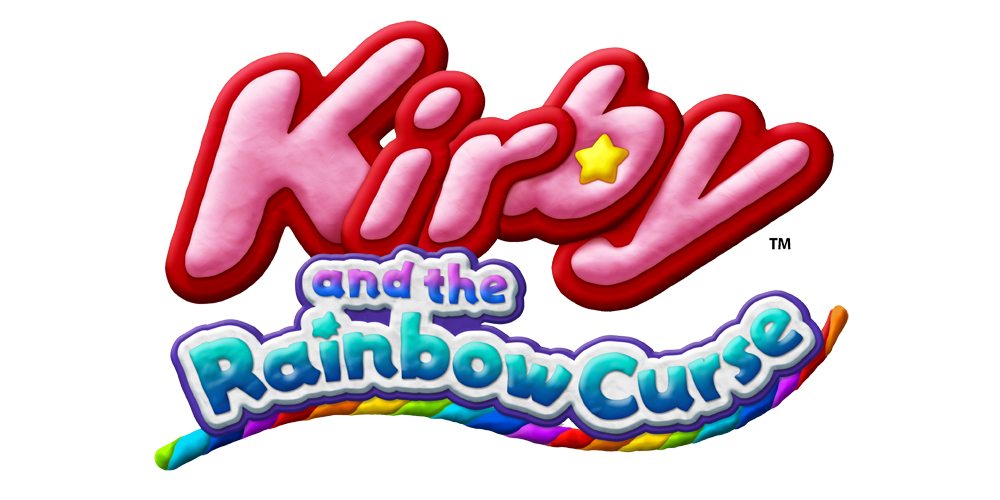Once again I find that one company is monopolizing my meager daily allotment of gaming time, and once again that company is Nintendo. The Big N has recently released a pair of games from two of its prized first-party franchises, and, try as I might, I just can’t get enough.
Kirby and the Rainbow Curse first caught my attention when it was revealed last year during one of the regular Nintendo Direct broadcasts. After following Kirby from black and white to color, handheld to console, and vibrant sprite animation to a world of yarn a buttons, a faux-claymation adventure seemed par for the course.
The video teaser, however, simply didn’t do this game justice. Rainbow Curse is a gorgeous puzzle-adventure title that combines the warm, organic visuals of clay animation–think Wallace & Gromit, Gumby, or Pingu–with the unique charms of Hal Laboratory’s pink metamorph.
Like Early Nintendo DS standout Canvas Curse, this new Kirby game primarily focuses on using the stylus to manipulate the world around you. While this sometimes takes the form of scraping away excess clay to find hidden items or tapping Kirby himself to ramp up for a rolling attack, the primary focus is on drawing a rainbow-colored path to help our hero traverse the game environment.
There’s a limited amount of rainbow clay available, which sometimes means you have to choose between elevating Kirby to collect those prized stars, blocking the flow of water to provide safe passage, or skillfully scribbling your way through a treacherous cavern. Along the way Kirby occasionally transforms into a tank, sub, or other such instrument of destruction, which goes a long way to add diversity to the gameplay.
Clever amiibo support–Kirby and company can be activated via the NFC area to provide once-a-day buffs that disappear when you die–also helps spice up the offering. (But good luck trying to track down those elusive King Dedede and Meta Knight amiibos!)
Four-player multiplayer is possible with the addition of the spare Wii Remotes you keep forgetting you own, and, like the games before it, Kirby and the Rainbow Curse makes for a great family gaming experience.
The game does, however, come with its own drawbacks. Because of Kirby’s stylus-only control scheme, you’re likely to spend your entire experience staring solely at the GamePad. In fact, unless the rest of the family is playing along as helpful Waddle Dees or, like my kids, just love to watch the action unfold, there’s not really any incentive to turn on your television.
It’s also important to note that the nature of this draw-a-path gameplay can sometimes feel a little limiting. Worse yet, it occasionally feels clunky and unresponsive, especially during some of its more trying boss fights.
Still, I can’t help but recommend Kirby and the Rainbow Curse to Wii U owners. It’s another delightfully charming Kirby adventure, not to mention another genuinely satisfying first-party Nintendo title.
 Meanwhile, over on my shiny New Nintendo 3DS XL, I can’t seem to stop playing Pokémon Shuffle. To say that this freemium title is a classic match-three puzzler wrapped in the Pokémon license would be… accurate. Of course, saying that it’s a highly addictive match-three skillfully wrapped in the Pokémon license would be even more so.
Meanwhile, over on my shiny New Nintendo 3DS XL, I can’t seem to stop playing Pokémon Shuffle. To say that this freemium title is a classic match-three puzzler wrapped in the Pokémon license would be… accurate. Of course, saying that it’s a highly addictive match-three skillfully wrapped in the Pokémon license would be even more so.
In Shuffle the path of the Pokémon trainer is a literal one–it moves the player laterally from board to board, each themed around a specific Pokémon. The puzzle tiles feature the faces of your party Pokémon, and you swap these pieces two at a time in an attempt to match, shift, and chain together combos for big damage against your foe.
The classic Pokémon type-system arrives intact, meaning that water-types work well against fire-types, just as fire does extra damage to grass-types.
Pokémon Shuffle even updates things with the new Mega Stone system; defeating certain boards unlocks a Mega Stone rather than a brand new Pokémon, and it can be used to make the appropriate Mega-Evolved monster even more powerful.
If this sounds fun, that’s only because it is. But the devil’s in the details.
Each Pokémon has a base percentage that represents how easy it is to capture. By beating that Pokémon’s game board within the specified turn limit, you gain the opportunity to go for the capture–and finishing early ups your odds of a successful capture.
A larger stable of Pokémon means you can stack the deck in your favor by choosing pocket monsters with a type advantage over an upcoming enemy, so it really does come down to catching ’em all.
Shuffle fully realizes this, and uses it to its advantage.
What you’re ultimately faced with is a three-tier commodity system. Hearts–you only have five, and they regenerate at a rate of around one per half-hour–determine how many rounds of Poké-matching you can do in a sitting. Spent a heart to challenge a Pokémon, but then failed to capture him after winning the battle? Tough beans! That Heart’s already been spent–better luck next time.
Of course, you can get a second, higher chance by purchasing a Great Ball using Coins, an in-game currency you earn by winning matches and checking-in daily (which also gives the game a chance to tempt you with special time-sensitive battles.)
Occasionally, you’ll also earn a Jewel, a special item that can be used to instantly restore your five Hearts. Jewels can also be traded for Coins, which, in addition to buying Great Balls, can also be spent pre-match to net extra turns and various other buffs.
To misquote Wu-Tang Clan, Jewels rules everything around you–they’re the magic bullet that can easily keep you ahead of the game. They are also very scarce, which is why you can always make a quick jump to the eShop to buy one for a buck. And there’s the rub.
Is that really necessary? No. I’ve been playing for a week, and haven’t yet relinquished so much as a thin dime. But the temptation is always there.
In summation, Pokémon Shuffle is sort of like a really high quality phone game that you don’t play on your phone. As such, I fear the problem is that Shuffle, like its iOS and Android brothers and sisters, may be quickly forgotten.
For now, though, it’s fun and it’s free and it’s readily available on your nearest Nintendo 3DS device.
Review materials provided by: Nintendo of America




